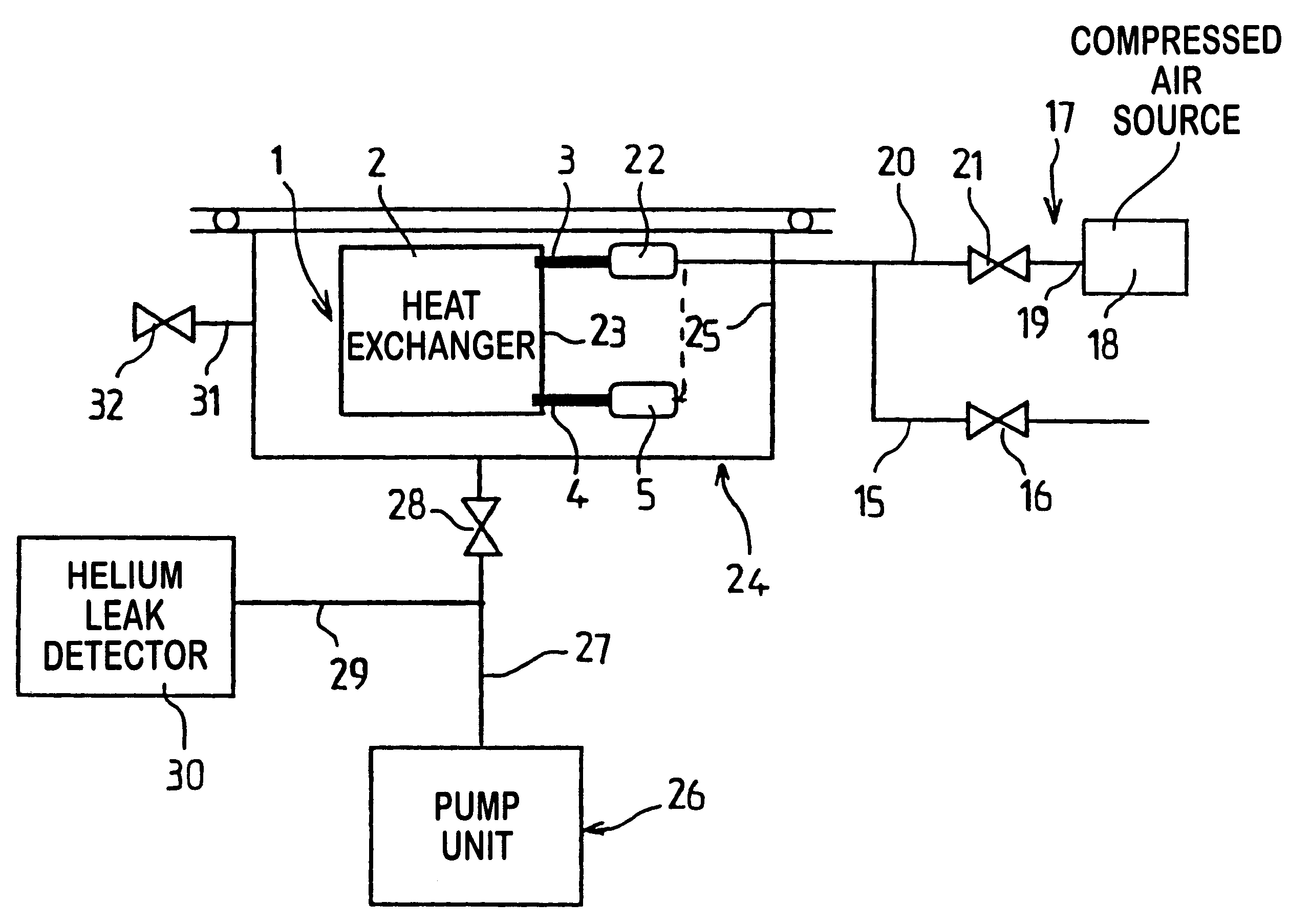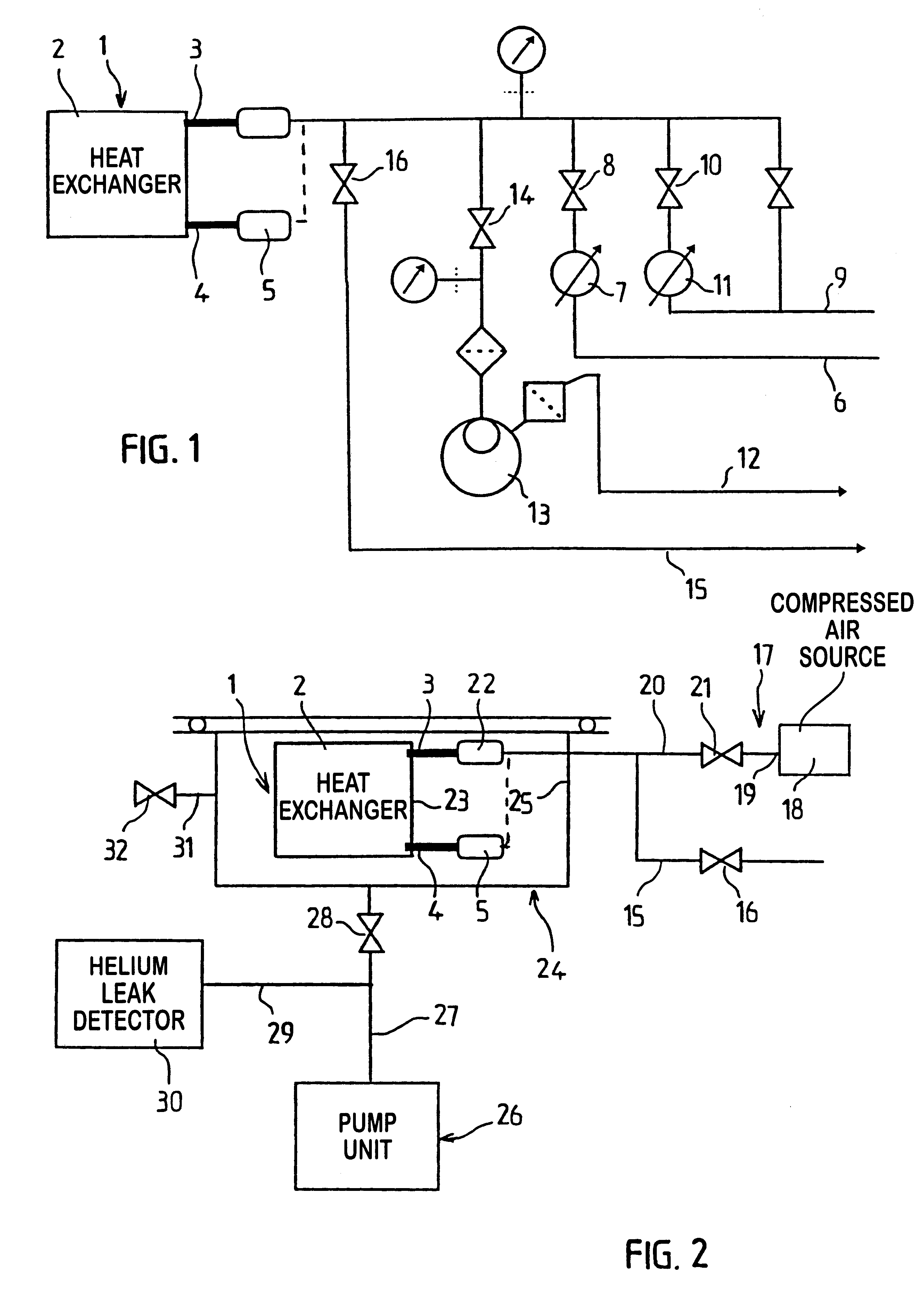Method and apparatus for detecting leaks in heat exchangers for motor vehicles
a technology for leak detection and heat exchangers, applied in lighting and heating apparatus, structural/machine measurement, instruments, etc., can solve the problems of wasting time, wasting helium, and wasting helium, so as to avoid the drawbacks of helium consumption, avoid the time of the machine, and avoid the effect of erroneous rejects
- Summary
- Abstract
- Description
- Claims
- Application Information
AI Technical Summary
Benefits of technology
Problems solved by technology
Method used
Image
Examples
Embodiment Construction
FIG. 1 is intended to show the relative complexity of a pressurization device as required for implementing a conventional helium test.
In such a test method, the heat exchanger 1 that has a leakproof internal cavity 2 conventionally includes an inlet pipe 3 and an outlet pipe 4. The outlet pipe 4 is closed with a stopper 5. Alternatively, the outlet pipe 4 can be connected to the inlet pipe 3 so as to increase gas flow and thus reduce test time. The inlet pipe 3 is connected to a set of pipes comprising:
an inlet pipe 6 for air under pressure, which pipe is provided with a pressure regulator 7 and a pressurized air inlet valve 8;
an inlet pipe 9 for helium under pressure which pipe is provided with at least one pressure regulator 11 and at least one pressurized helium inlet valve 10; and
an air exhaust pipe 12 provided with a primary pump 13 and with an air exhaust valve 14 to establish a vacuum of about 10 hPa, and an air or helium exhaust pipe 15 fitted with an exhaust valve 16.
All of...
PUM
 Login to View More
Login to View More Abstract
Description
Claims
Application Information
 Login to View More
Login to View More - R&D
- Intellectual Property
- Life Sciences
- Materials
- Tech Scout
- Unparalleled Data Quality
- Higher Quality Content
- 60% Fewer Hallucinations
Browse by: Latest US Patents, China's latest patents, Technical Efficacy Thesaurus, Application Domain, Technology Topic, Popular Technical Reports.
© 2025 PatSnap. All rights reserved.Legal|Privacy policy|Modern Slavery Act Transparency Statement|Sitemap|About US| Contact US: help@patsnap.com


